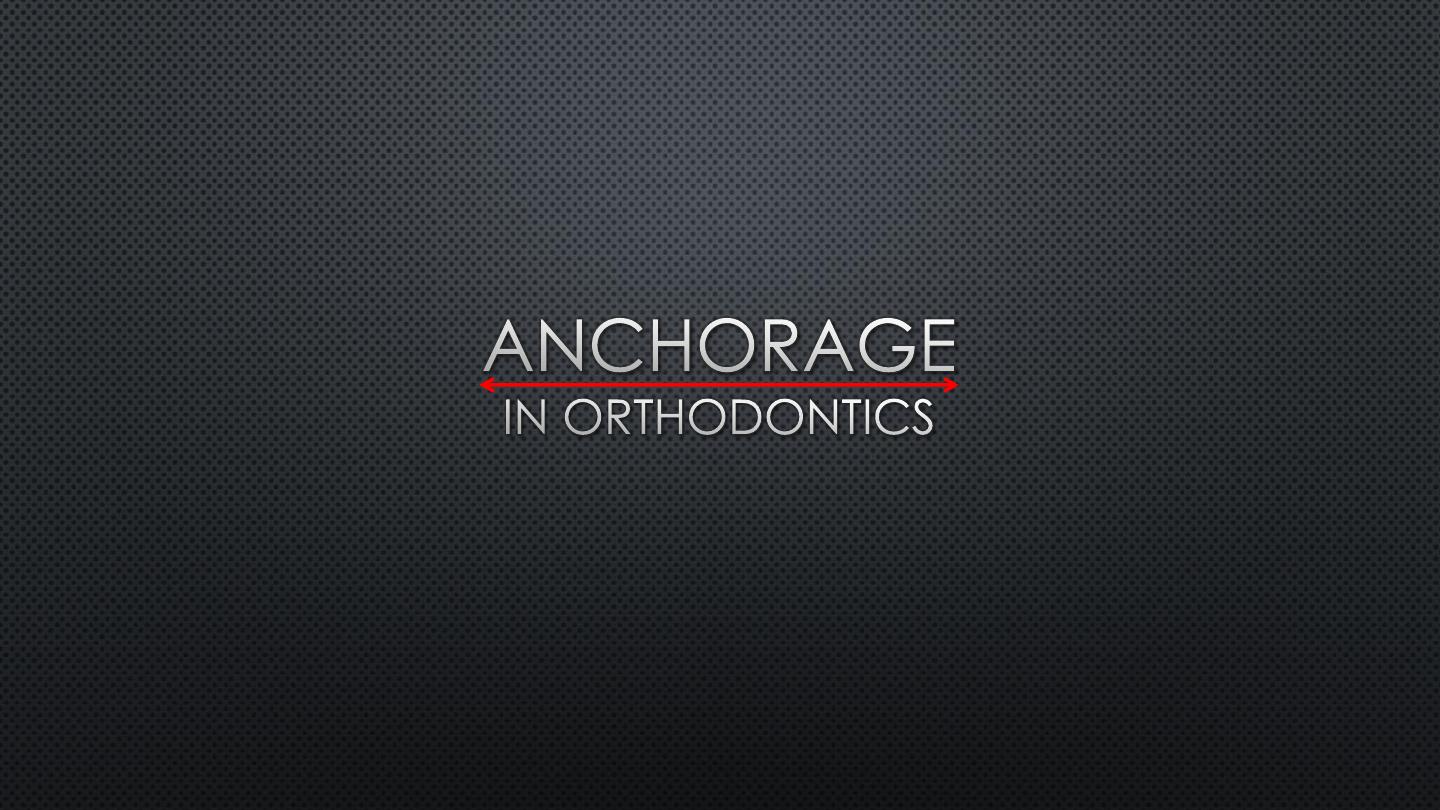
Year 4 (2019-2020)
Dr. Anas Almukhtar
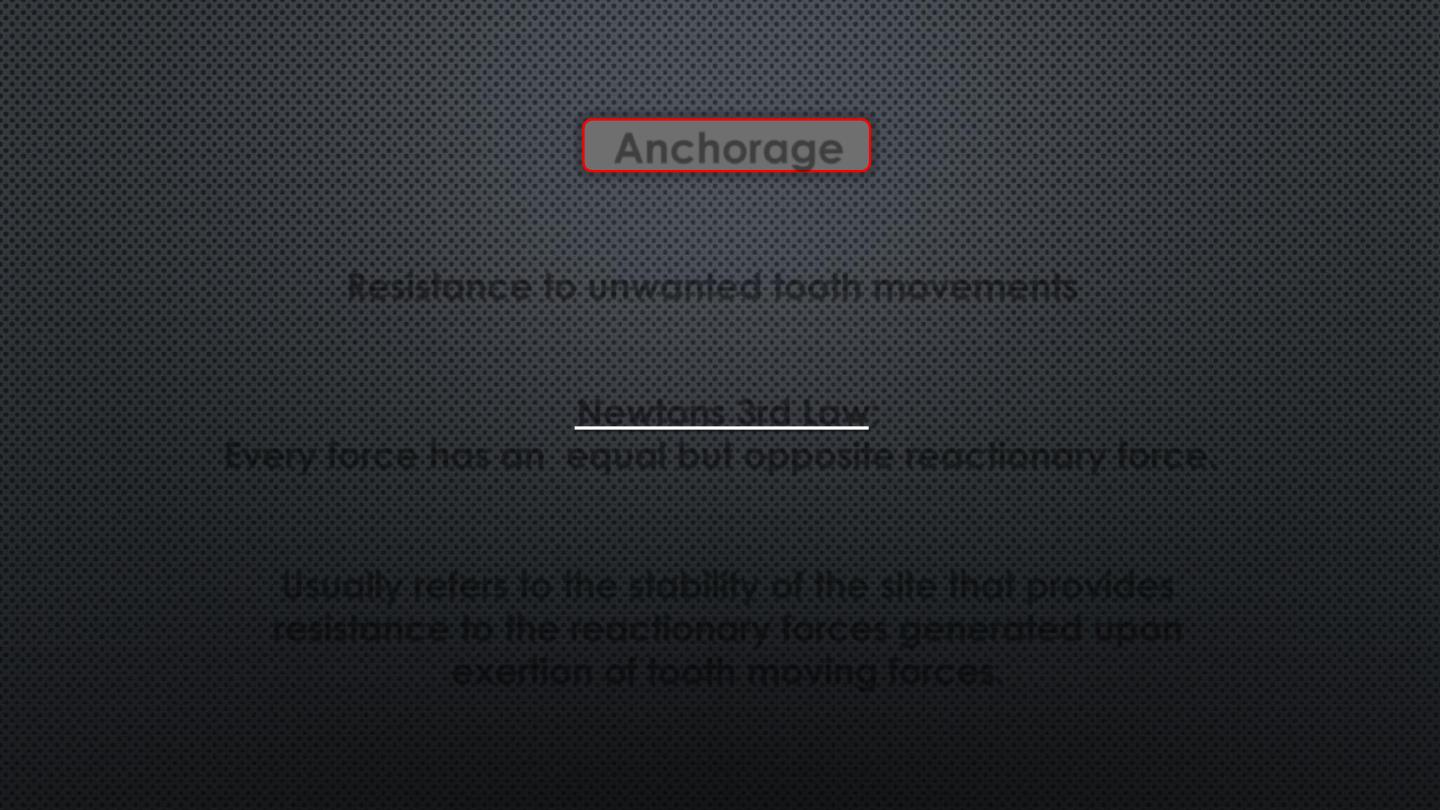
Anchorage
Resistance to unwanted tooth movements
Newtons 3rd Law:
Every force has an equal but opposite reactionary force.
Usually refers to the stability of the site that provides
resistance to the reactionary forces generated upon
exertion of tooth moving forces.
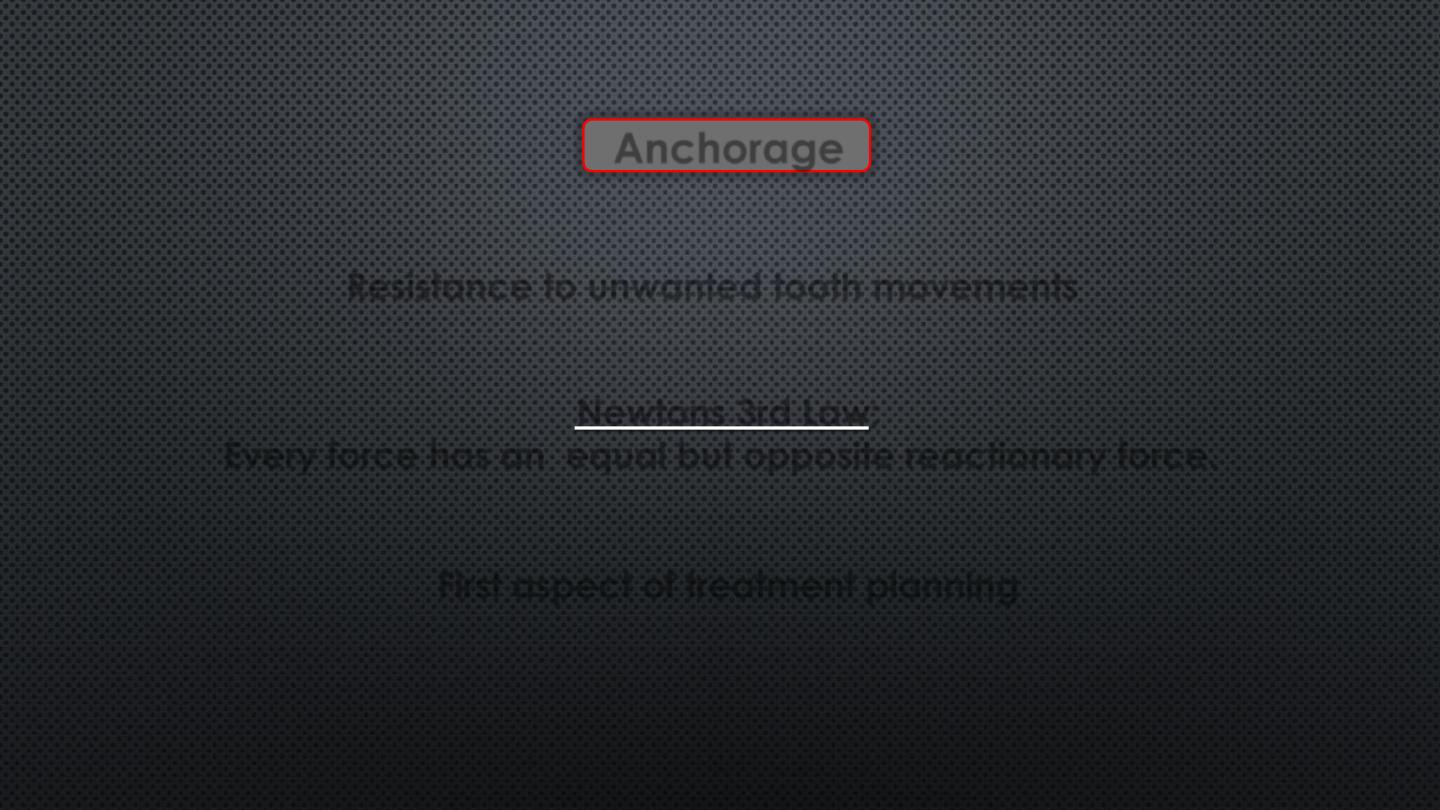
Anchorage
Resistance to unwanted tooth movements
Newtons 3rd Law:
Every force has an equal but opposite reactionary force.
First aspect of treatment planning
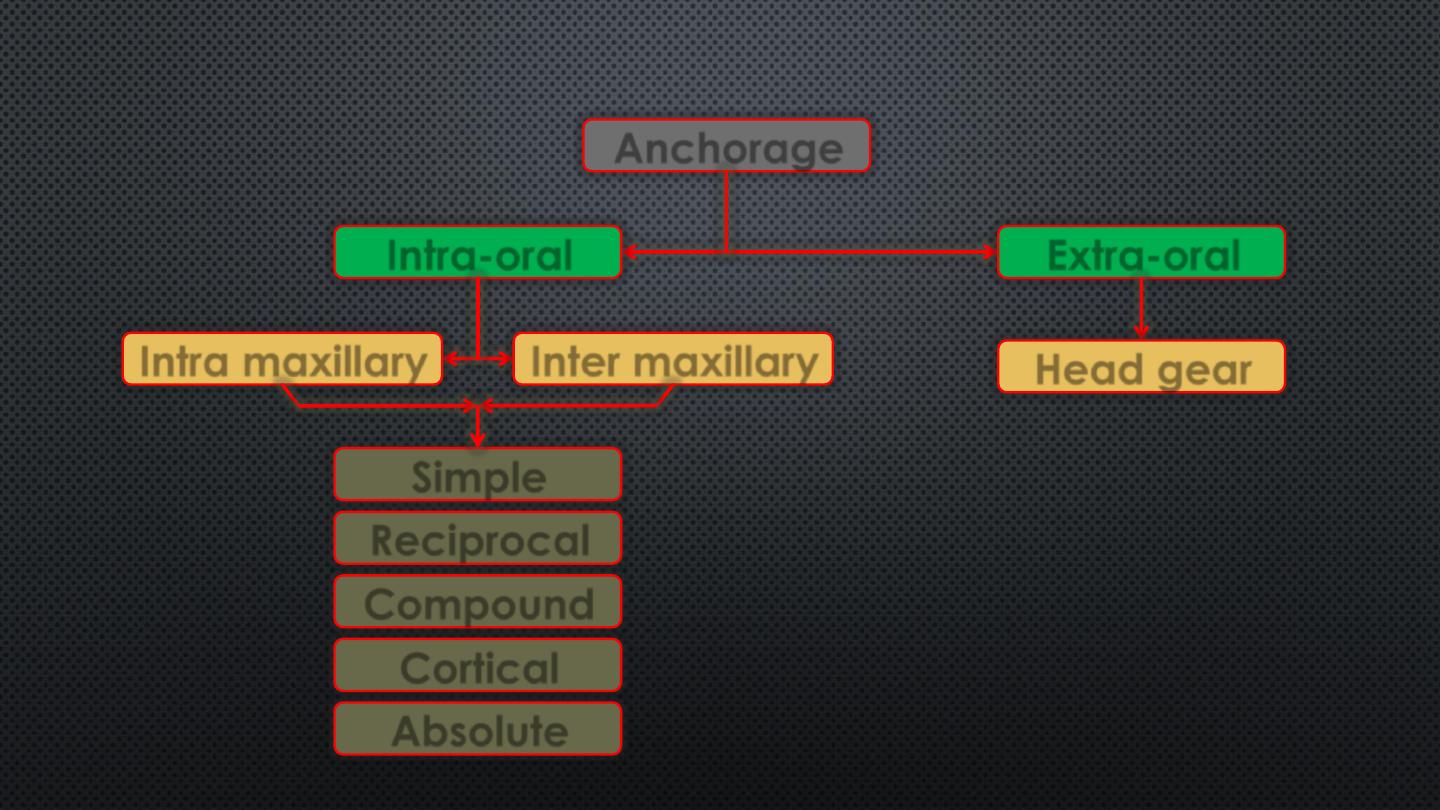
Anchorage
Extra-oral
Intra-oral
Head gear
Reciprocal
Simple
Cortical
Compound
Inter maxillary
Intra maxillary
Absolute
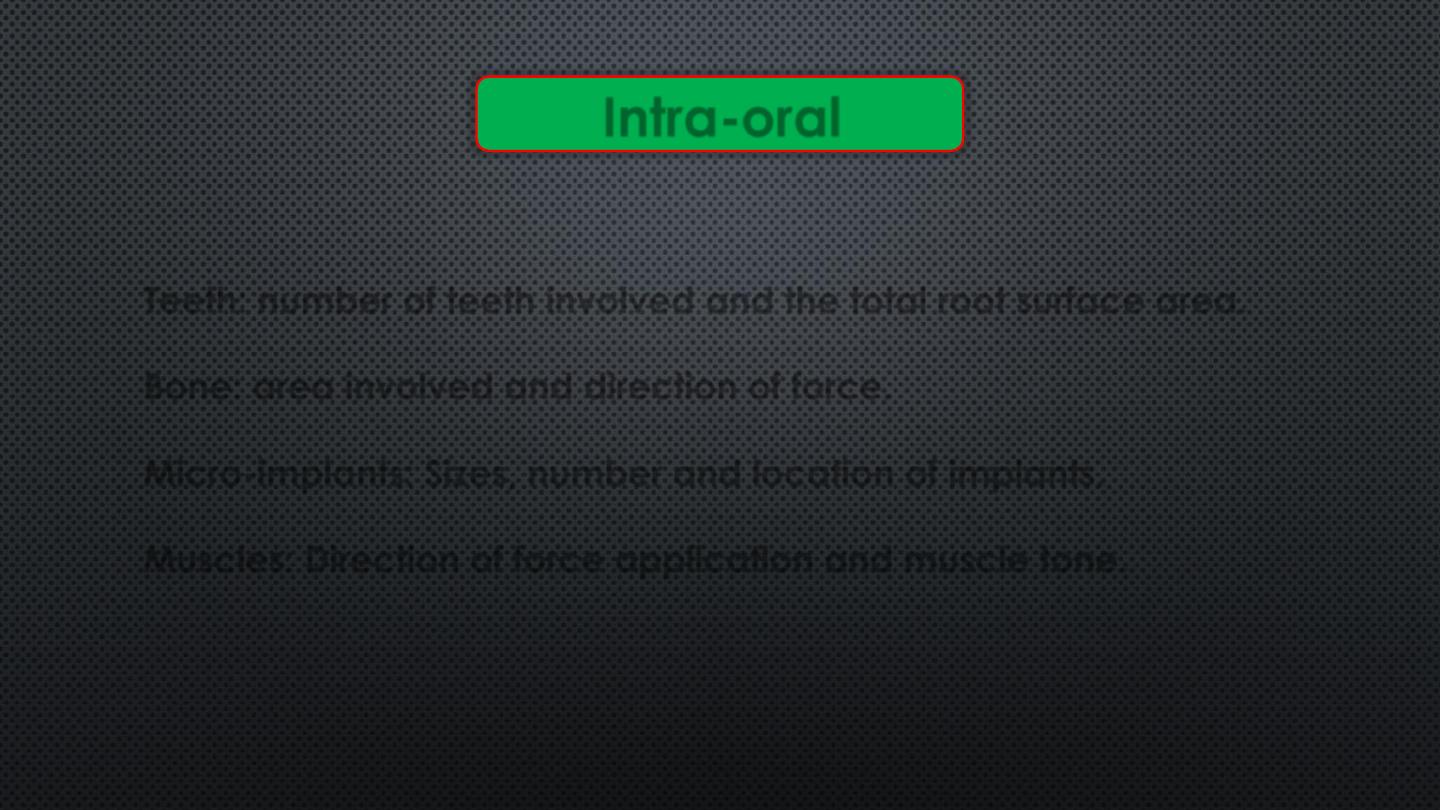
Intra-oral
Teeth
: number of teeth involved and the total root surface area.
Bone
: area involved and direction of force.
Micro-implants
: Sizes, number and location of implants.
Muscles
: Direction of force application and muscle tone.
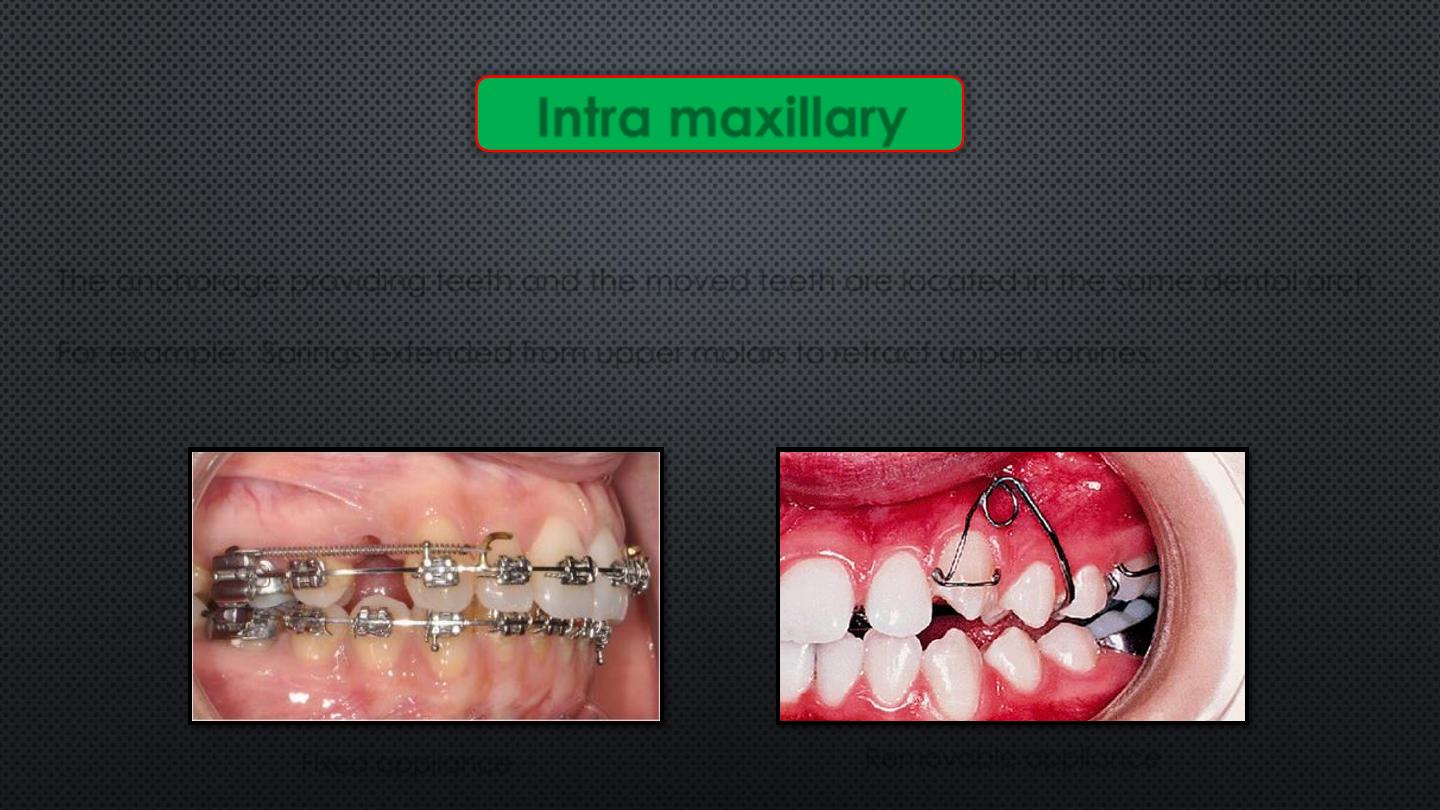
Intra maxillary
The anchorage providing teeth and the moved teeth are located in the same dental arch
For example: Springs extended from upper molars to retract upper canines.
Fixed appliance
Removable appliance
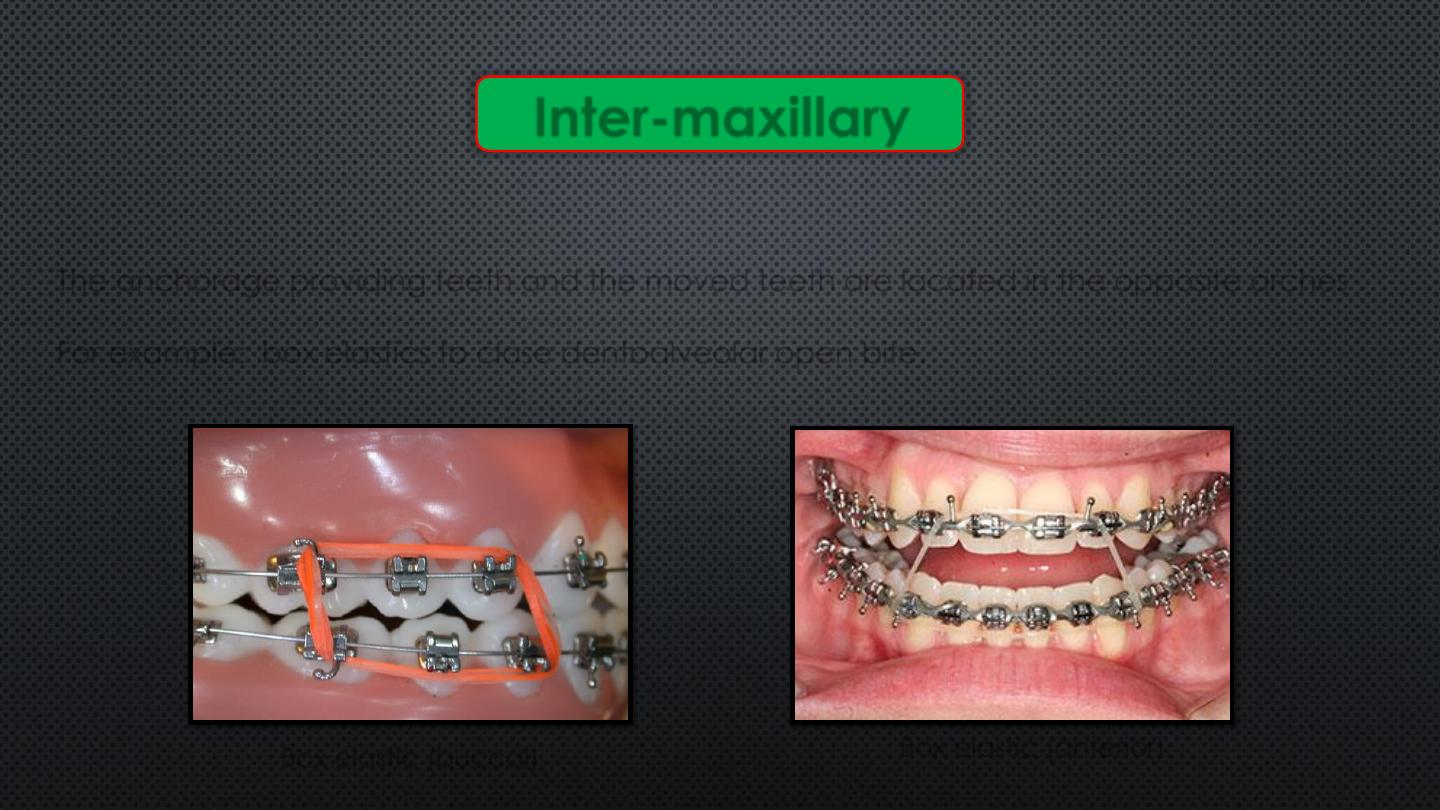
Inter-maxillary
The anchorage providing teeth and the moved teeth are located in the opposite arches
For example: box elastics to close dentoalveolar open bite.
Box elastic (buccal)
Box elastic (anterior)
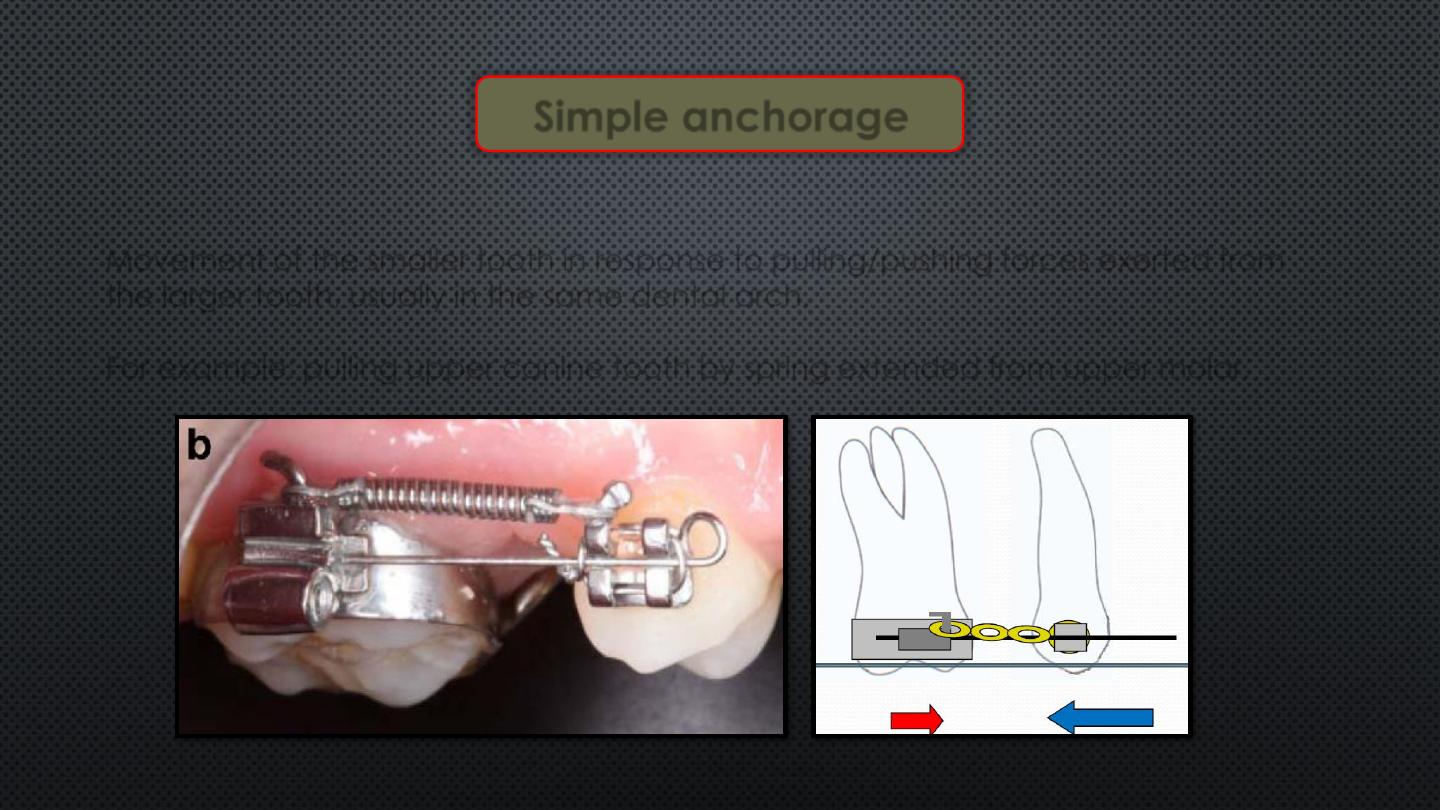
Simple anchorage
Movement of the smaller tooth in response to pulling/pushing forces exerted from
the larger tooth, usually in the same dental arch.
For example
: pulling upper canine tooth by spring extended from upper molar.
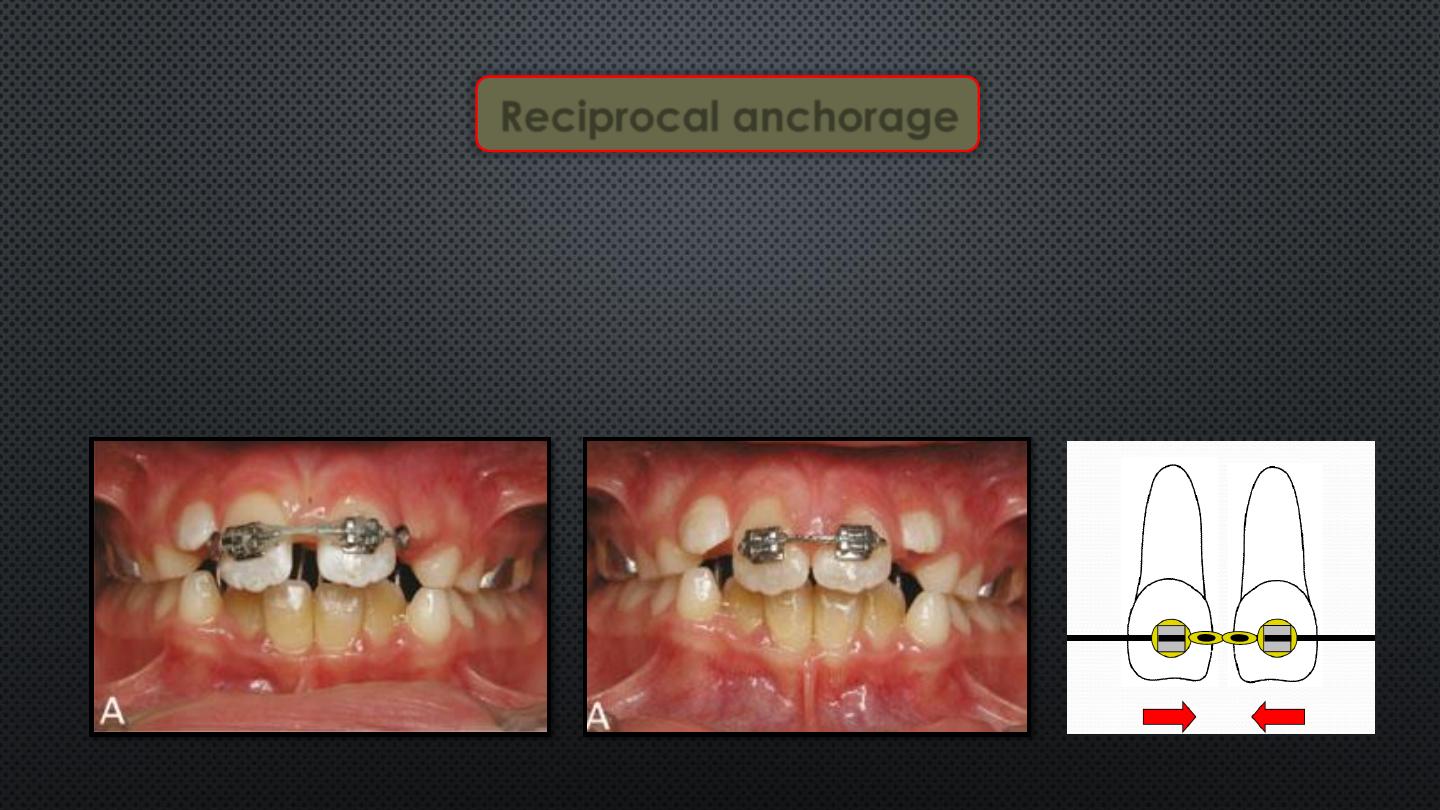
Reciprocal anchorage
When orthodontic force is applied between equally sized teeth they tend to move the same
distance from each other but in opposite directions.
For example
: pulling two centrals towards each other to close central diastema.
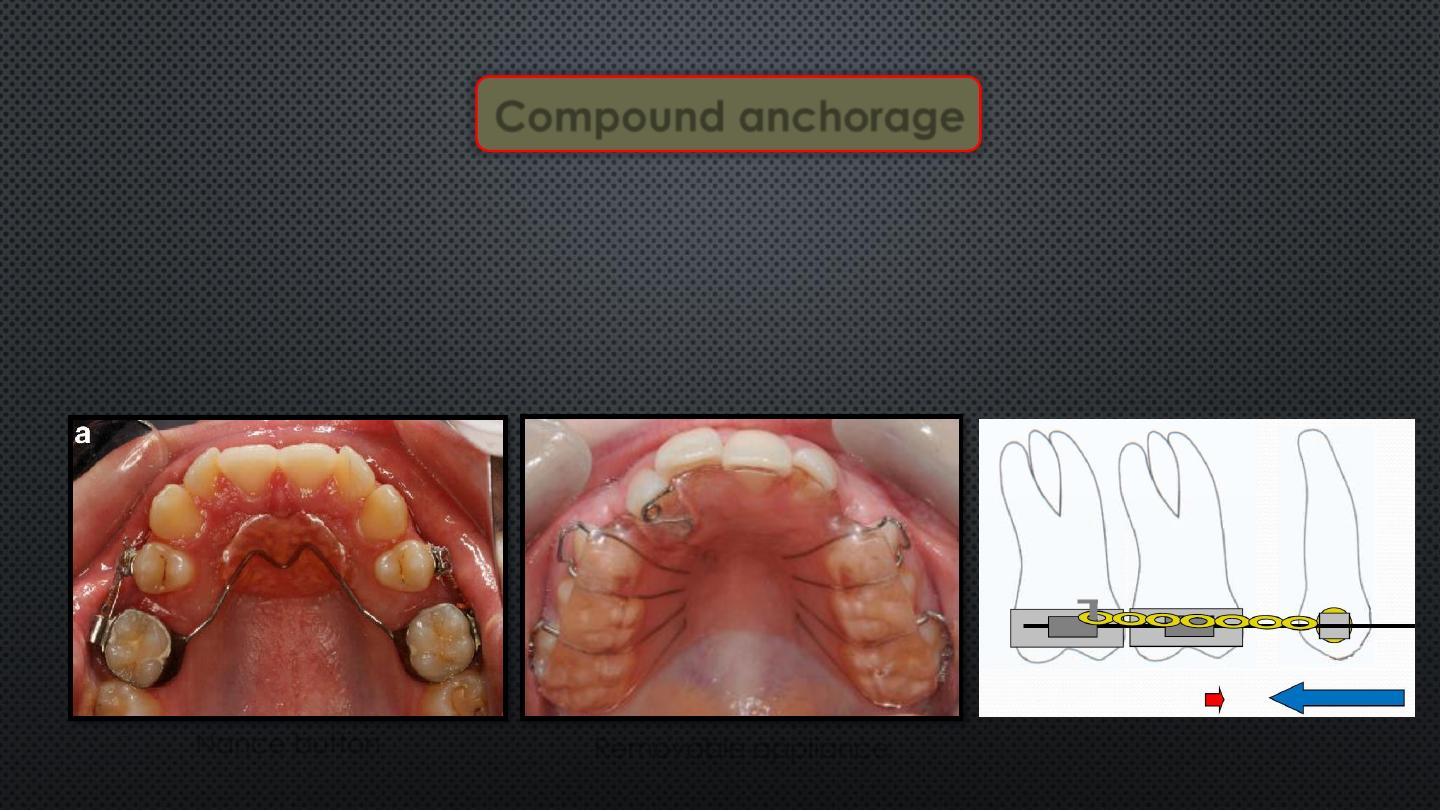
Compound anchorage
Also called reinforced anchorage where the amount of anchorage is augmented by
Increasing the number of teeth on the anchor side or gaining support from surrounding
Structures such as palatal bone or circum-oral musculature.
Nance button
Removable appliance
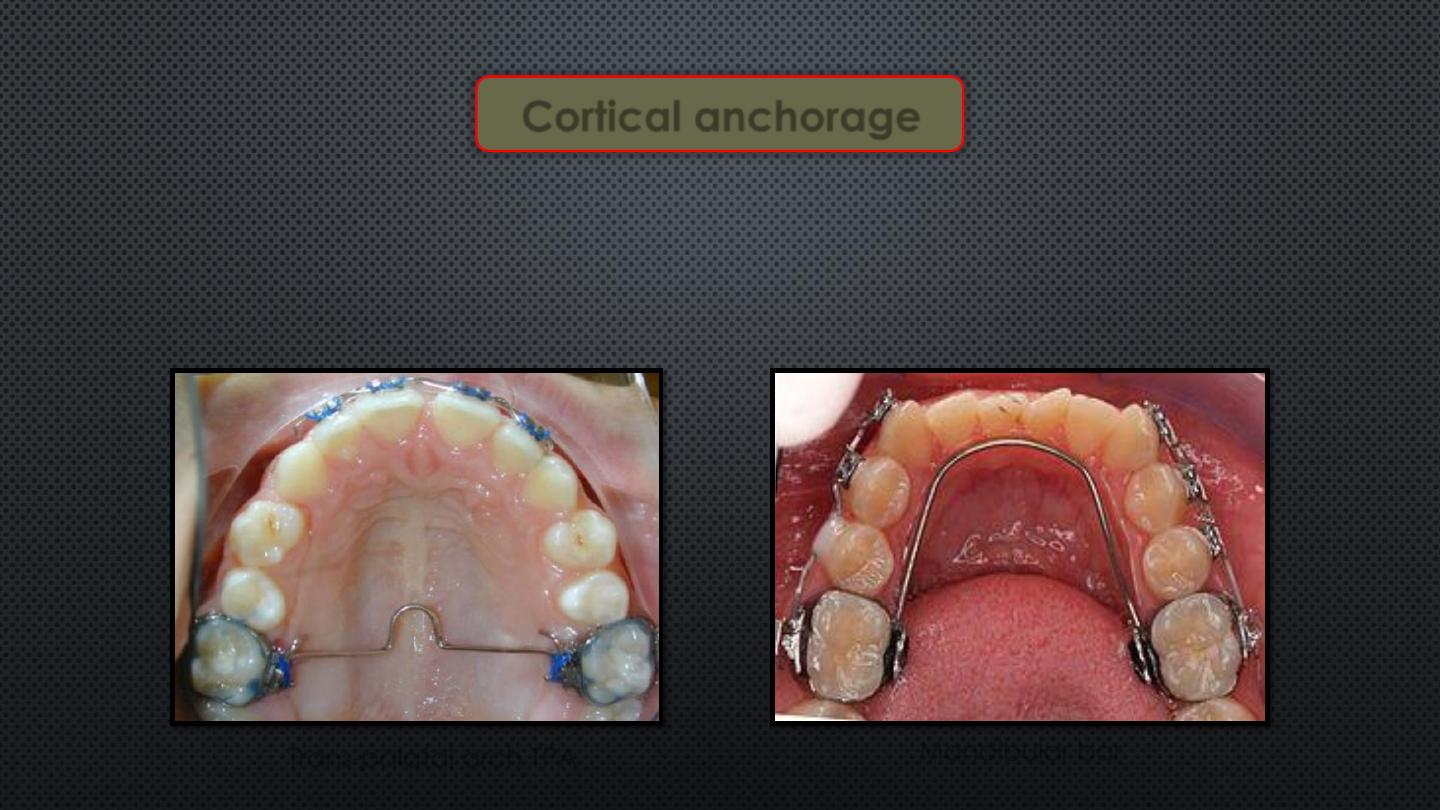
Cortical anchorage
When the alveolar cortical plate act as a barrier against unwanted movement of anchor teeth.
For example
: using trans palatal arch to prevent mesial movement of upper molar teeth.
Trans-palatal arch TPA
Mandibular bar
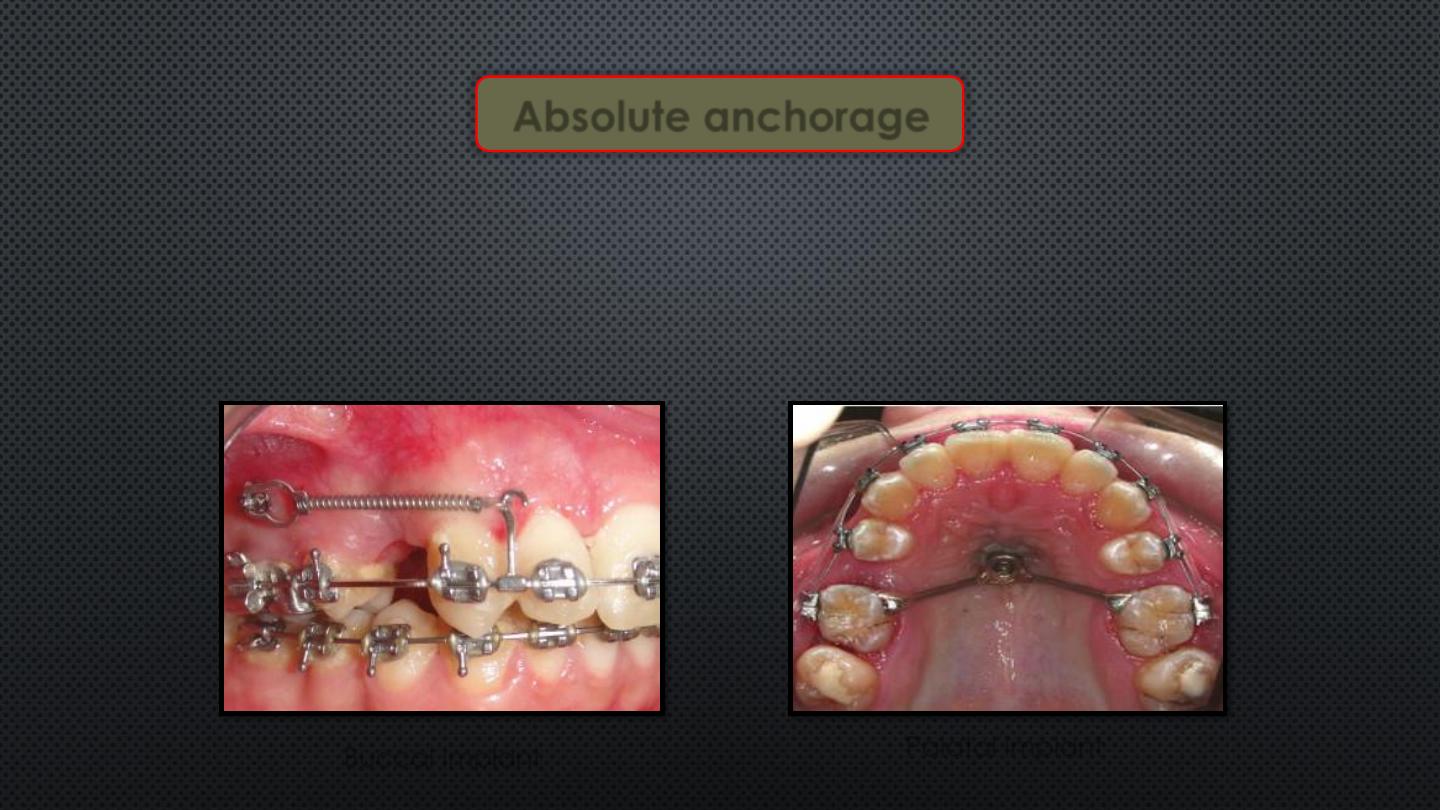
Absolute anchorage
Tooth movement occur with zero movement of anchorage teeth.
For example
: retraction of the anterior teeth against temporary anchorage device (TAD)
Buccal implant
Palatal implant
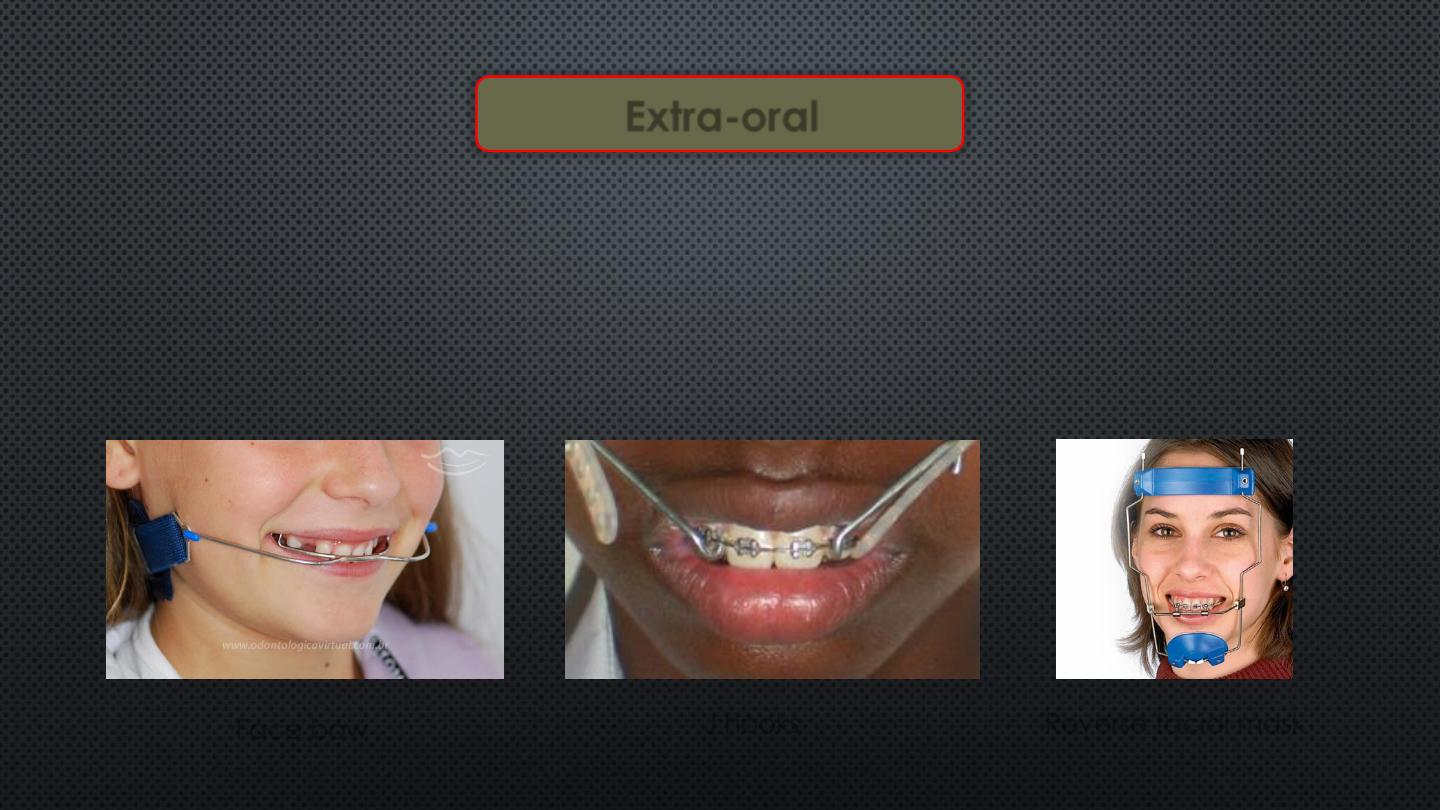
Extra-oral
When tooth movement occurs due to orthodontic forces exerted from extraoral skeletal structure
For example
: the use of headgear and J hooks to retract upper anterior teeth .
Face bow
J hooks
Reverse facial mask

Factors affecting anchorage
• Roots shape and total roots surface area
• Nature of orthodontic force
• Number of teeth involved
• Occlusion (intercuspation)
• Individual variations
• The availability of anchorage enforcement
